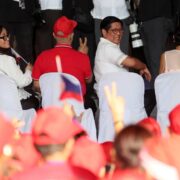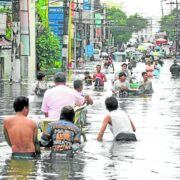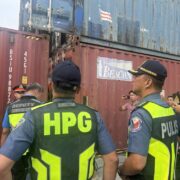Rocky Thailand-Cambodia relations

Phnom Penh–The simmering border dispute between Thailand and Cambodia has plunged into its deepest crisis in years, revealing a potent mix of unresolved historical grievances, asymmetric economic interdependence, and a dramatic breakdown of trust at the highest political levels. What began as a deadly skirmish has spiraled into a full-spectrum standoff, threatening not only regional stability but also the livelihoods of ordinary citizens caught in the crossfire.
The core of the enduring conflict lies in a fundamental disagreement over cartography and the legacy of French colonialism. Cambodia steadfastly adheres to the 1:200,000-scale maps from the 1904 and 1907 Franco-Siamese Conventions, particularly the Annex I map that explicitly placed the Preah Vihear temple within its territory. This demarcation was famously upheld by the 1962 International Court of Justice ruling, and Cambodia views these maps as legally binding.
Thailand, conversely, champions its own, more detailed 1:50,000-scale national maps, arguing they more accurately reflect the true topography and the watershed principle, which was the intended basis for border delimitation. This cartographic clash, stemming from differing projection systems and scales, creates vast “gray zones” along their 817-km shared frontier, acting as perpetual flashpoints. The lack of a mutually agreed-upon demarcation has fueled recurrent armed clashes, notably between 2008 and 2011.
The current crisis escalated rapidly following a May 28, 2025, skirmish in the disputed Emerald Triangle that resulted in the death of a Cambodian soldier. Reactions from both sides have been a tit-for-tat escalation:
Thailand’s economic leverage: Thailand has imposed restrictions at border crossings, impacting trade and the movement of people. This highlights its significant economic leverage over Cambodia. Hundreds of thousands of Cambodian migrant workers (approximately 500,000, with over 400,000 legally registered) are vital to Cambodia, sending back substantial remittances (e.g., $1.25 billion in 2022).
Cambodia’s counter-threats: In response, Cambodia’s leaders have reacted strongly, including appealing to its migrant workers to return home (though many pragmatically remain due to significantly higher wages and better living standards, public services, infrastructure and health care in Thailand). Cambodia has also threatened to disconnect cross-border internet links, cut off electricity supplies, and even halt PTT (Petroleum Authority of Thailand) fuel services, alongside bans on Thai movies, TV shows, and imports.
The “unprofessional” leak: The diplomatic spat reached a boiling point when Thai Prime Minister Paetongtarn Shinawatra publicly criticized Cambodian leaders on June 16, labeling their actions, particularly their reliance on social media for diplomatic communications, as “unprofessional.” In a dramatic countermove, Cambodian Senate President Hun Sen subsequently leaked a June 15 private phone conversation between himself and Paetongtarn. The leaked audio, which appeared to show Paetongtarn criticizing a Thai military commander (Lt. Gen. Boonsin Padklang, commander of the Second Army Region), plunged her into a severe domestic political crisis, forcing her to make public apologies and mend fences with the powerful Thai military.
Shattered personal bonds: This very public exchange has irrevocably shattered the “god-brother” bond that for over 30 years united Hun Sen and the Shinawatra family. Hun Sen’s stark declaration that the “30-year relationship was destroyed” signals a profound breakdown in trust, casting a long shadow over future informal negotiations.
Geopolitical undercurrents: The conflict is increasingly viewed through a “China-trained vs US-trained armies” lens. Cambodia has notably deepened its military ties with China, including acquiring tanks, armored vehicles and air defense systems, and engaging in large-scale joint exercises like “Golden Dragon 2025,” especially after US military aid was curtailed due to human rights issues. Thailand, a long-standing US treaty ally and participant in major drills like “Cobra Gold 2025,” has also diversified its military procurement (e.g., Chinese submarines and tanks) and increased joint exercises with China, creating a delicate balancing act.
The immediate future of Thailand-Cambodia relations appears fraught with tension. With nationalistic sentiment mobilized on both sides, making significant compromises is politically challenging for either government.
Long-term path: A lasting peace requires both nations to move beyond blame and embrace genuine dialogue. This could involve exploring new, mutually acceptable mechanisms for border demarcation that acknowledge the historical complexities, or a willingness to abide by international legal rulings. The Phnom Penh Post/Asia News Network
—————-
Vichana Sar is a researcher based at the Royal Academy of Cambodia. The views and opinions expressed are his own.
—————-
The Philippine Daily Inquirer is a member of the Asia News Network, an alliance of 22 media titles in the region.

















Why bullying thrives and bullies are protected